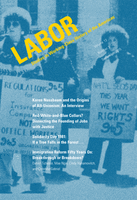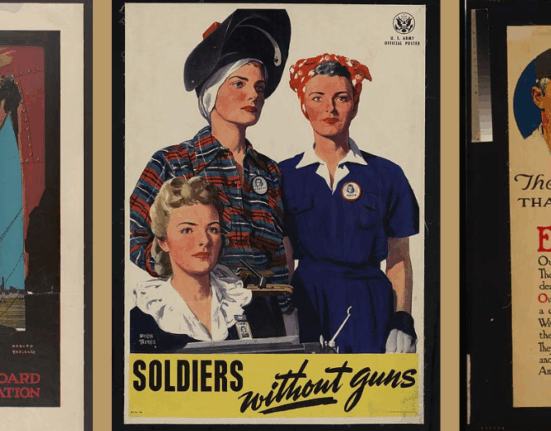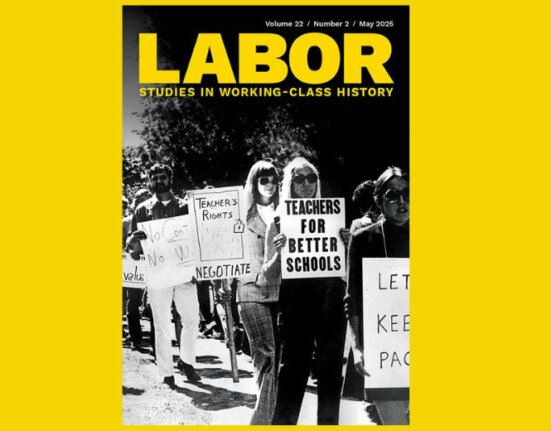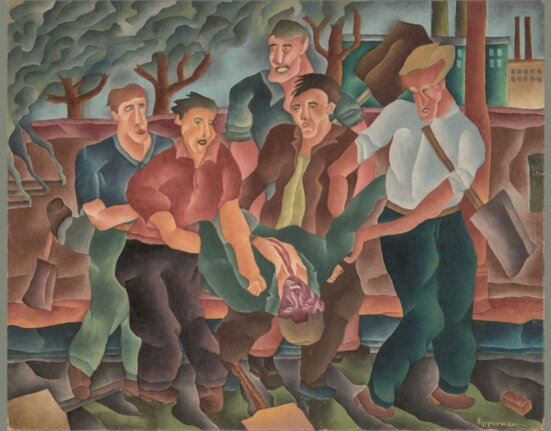In This Issue
Editors’ Introduction
The Common Verse
- Susan Eisenberg, “Introductions“
LAWCHA Watch
- Naomi R. Williams, “Working Together for Economic Justice“
Up for Debate
- Eric Arnesen, “Introduction”
In 1965, the US Congress passed, and President Lyndon B. Johnson signed, the Immigration and Nationality Act (also known as the Hart-Celler Act), which transformed the US immigration system. The new law overturned the four-decade-old National Origins Act of 1924, which imposed a system of immigration restriction using discriminatory quotas based on country of origin. “Up for Debate” features the contributions of four scholars who were asked to reflect broadly on the 1965 law and its legacy as the bill’s fiftieth anniversary approaches. Sociologist Daniel J. Tichenor and historian Mae M. Ngai examine the act’s passage, consequences, accomplishments, and limitations; historian Cindy Hahamovitch explores the experiences of Jamaican immigrant farmworkers after World War II to demonstrate that other laws were more important in shaping the contours of their lives; and political scientist Christina Gabriel addresses the process and consequences of immigration law reform in Canada.
- Daniel J. Tichenor, “Compromise and Contradiction: Taking Stock of an Intricate Reform“
- Mae M. Ngai, “Hart-Celler at Fifty: Lessons for Immigration Reform in Our Time“
- Cindy Hahamovitch, “Keeping the Unskilled Out: Why Hart-Celler Didn’t Matter to Workers“
- Christina Gabriel, “A Different Road? Canadian Immigration Policy in the 1960s“
Contemporary Affairs
- Lane Windham, “‘A Sense of Possibility and a Belief in Collective Power’: A Labor Strategy Talk with Karen Nussbaum”
Historian and former union organizer Lane Windham sits down with longtime labor activist and leader Karen Nussbaum to discuss the promises and challenges in today’s worker’s movement through the lens of Nussbaum’s own life. In 1973, Nussbaum cofounded 9to5, a groundbreaking women office workers’ group, and now directs Working America, a community-based AFL-CIO group for working people who do not have a union, founded in 2003. Windham paints Nussbaum as a foremother of contemporary “alt-labor,” labor groups like Working America that are not based in traditional collective bargaining. Nussbaum and her 9to5 cofounders rode the momentum of the women’s movement in the 1970s just as workers’ organizations today build from the immigration, sustainable food, and global justice movements. Highlights of the article include Nussbaum’s motivations for founding Working America, her thoughts on labor’s future, and a discussion of strategies necessary for a potent new workers’ movement.
Articles
- Eric Larson,”Ode to the American Century: Ambivalent Americanism and the Founding of the Jobs with Justice Coalition”
This article examines the founding of Jobs with Justice, one of the most influential union-community coalitions of the post–New Deal order. More than two decades before the Occupy movement mobilized scorn against the “1 percent,” Jobs with Justice convened its coalitions by directing popular ire toward the “corporate robber barons.” While its anticorporate vision propelled its efforts to advance union struggle “beyond the ruins” of the Reagan era and early neoliberal reforms, it also overlapped with the populist contours of the ascendant New Right. By marshaling the moral weight of family, community, and Middle America, the coalition’s vision of class and nation—through what the article terms its “ambivalent Americanism”—both animated and blurred the antagonism between workers and robber barons that the coalition so energetically developed.
- Timothy J. Minchin, “Together We Shall Be Heard: Exploring the 1981 “Solidarity Day” Mass March”
This article provides the first detailed examination of the “Solidarity Day” march, which was held on September 19, 1981, in Washington, DC. Well funded and well organized, Solidarity Day was a mass protest against President Reagan’s policies, particularly his cuts to social programs. Although the march was initiated by the AFL-CIO, participants came from 250 organizations, including 100 unions and a variety of civil rights, religious, and civic groups. Despite an impressive turnout of at least 260,000 people, Solidarity Day has received little scholarly attention. Drawing on unutilized archival records, this article argues that Solidarity Day was a protest that deserves more scholarly—and public—recognition. Solidarity Day showed that the AFL-CIO, which has often been viewed as bureaucratic and conservative, could mobilize mass street protests. It also boosted the morale of many union members, helped to strengthen the leadership of AFL-CIO president Lane Kirkland, and set the precedent for a different kind of AFL-CIO, one that was much more connected to its members. While Kirkland proved unable—or unwilling—to fundamentally reorient the AFL-CIO toward grassroots activism, these ideas were ultimately carried through by John Sweeney, a reformer who won the federation’s presidency in 1995.






